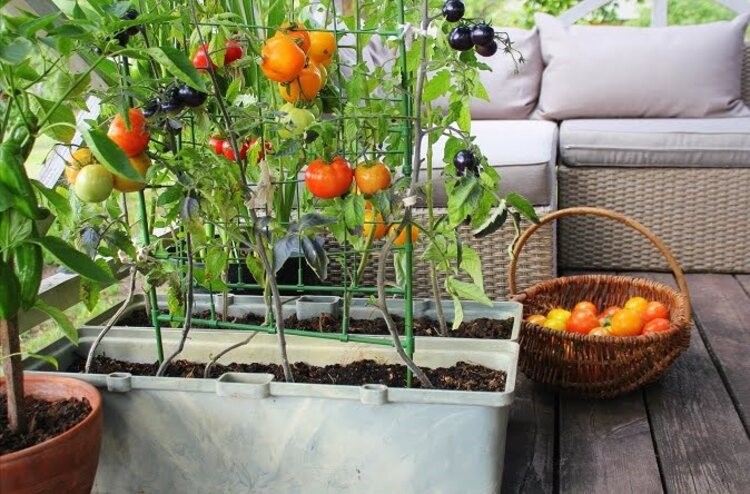What’s So Great About Indoor Gardening?
As a society, we are rapidly moving away from outdoor gardening, so it’s essential to be aware of how much time and money indoor gardening can save you in the long run. In addition, it’s easy to see how the plants look better and the ease of use and convenience, which is another big selling point of indoor gardening. There are so many reasons why growing plants indoors is easier and cheaper than producing them outside. It helps save your money and enables you to obtain them throughout the year. Also, indoor gardening provides the perfect environment for plants to grow. Plants may be produced in nearly any lighting, which is convenient!
How to Start Indoor Gardening?
It’s easy to start an indoor garden. Just select the plant you wish to cultivate and then a planter to go with it. Then it becomes simply a concern of planting it. That’s all there is to it. You ought to decide where to keep your plant once you’ve obtained it. Immediately after planting, it’s important to fertilize your plants and water them daily. If you feed them the required amount of water, they will bloom and thrive. Depending on the kind of plants you’re cultivating, the amount of water you provide will vary.
Types of Indoor Gardening
Indoor gardening comes in many different types, including hydroponic gardening, water culture gardening, etc.
- Indoor gardening that uses a nutrient solution is known as hydroponic gardening. This type of indoor gardening is very similar to growing plants in a hydroponic greenhouse. The main difference is that indoor gardening is done in a closed environment, while hydroponic gardening is done in a greenhouse.
Hydroponic gardening is a popular type of indoor gardening because it provides the perfect environment for plants to grow. In a hydroponic greenhouse, you could cultivate any plant. Also, hydroponic gardening is effortless to set up. You won’t have to invest a lot, and getting started is clear and straightforward.
- The second type of indoor gardening is water culture gardening. It’s similar to hydroponic gardening, but it uses a more natural growing medium. Indoor gardening of this type takes the minimum effort. It’s effortless to establish and maintain. Almost any vessel could be used to grow plants.
- The third type of indoor gardening is soil-based gardening. For soil-based gardening, you will need to provide the plants with nutrients. Soil-based gardening also offers many benefits, such as saving space, being able to grow plants in almost any lighting condition, and saving money on electricity.
A quick guide to Houseplants
Here are 7 of the most significant house plants to grow.
1. Herbs
Herbs are a great way to start your indoor gardening adventure. They’re not difficult to grow, and the herbs you can grow inside are adaptable. You can use them in various ways, such as adding them to your favourite recipes or using them to make your favourite tea.
2. Tomatoes
Tomatoes are among the best widely grown indoor plants. They are an excellent plant to grow as they can be cultivated at diverse locations. They’re effortless to maintain. You may grow them in nearly any form of light, including in dark rooms.
3. Lettuce
It’s one of the most common and easiest plants to cultivate indoors. You don’t even have to water them, which is ideal for people who are short on time and energy. Lettuce is also one of the most versatile plants to grow. It can be used in a variety of forms. It’s delicious in salads, sandwiches, and garnish.
4. Peppers
Peppers are another easy plant to grow indoors. They are inexpensive to produce and can be grown in nearly any form of lighting. Because they are tolerant plants, you could cultivate them in any room of your home.
5. Spinach
You can grow spinach indoors in any light condition. It is a low maintenance plant that thrives in a variety of conditions. It grows well in a swinging planter as well. You can grow it in almost any room of the house, and it will keep you healthy all year round.
6. Peace Lily
The Peace Lily is a popular houseplant that’s easy to grow, beautiful to look at, and a great source of Vitamin D. The Peace Lily has a round, velvety, shiny green leaf and a white flower almost identical to the actual flower of the Lily. It can grow in any lighting condition and is very easy to care for.
7. Spider Plant
The spider plant is a great houseplant to own inside the house. It’s simple to cultivate, and they look fantastic. It would help if you bought a small pot, filled it with soil, and planted the spider plant. The spider plant will do the rest. It will grow in any lighting condition and will thrive in any home. Spider plants are also good air purifiers, which is excellent if you have allergies or asthma.
Indoor Gardening’s Advantages
Indoor gardening has numerous advantages. These are some of the most significant benefits:
1. It is cost-effective.
When you’re gardening outside, you need to spend money on many things, such as a garden, plants, soil, seeds, pots, lighting, and even a space to grow in. When you’re growing up indoors, you can save money on these things. You can get everything you need for indoor gardening for a fraction of the price you would spend if you were growing them outdoors.
2. It’s easier.
When you’re growing plants indoors, you have a much easier time gardening than you would if you were growing them outdoors. This is because you can keep everything under control, and you don’t have to worry about the weather, pests, or other issues that come with growing outside.
3. You can get your plants year-round.
Another significant benefit of indoor gardening is getting your plants year-round. When you grow plants indoors, you can have them any time of year. They are obtainable as soon as January and as later as December. If you grow them in the winter, you can also get them in the summer.
4. It’s safer.
Indoor gardening is safer than growing them outdoors. When growing plants indoors, you don’t have to worry about the weather or other things that can harm your plants. You can grow them in a place where they are safe from pests and insects and harmful weather.
5. You can save space.
When you’re growing plants indoors, you don’t have to worry about space, which is another benefit. You can produce your plants in small pots, so you don’t have to worry about finding enough space.
You’ll need to start them in a seedling tray or a peat pot. It’s essential to preserve them moist and fertilize them regularly. You could also add fertilizer to the soil you’re cultivating.
6. Improve Overall Health
Indoor gardening is also beneficial to one’s health. It aids in the ingestion of more oxygen into your body and the enhancement of your mood.
7. Live Green
When you grow plants indoors, you can also live green. You can grow them in an environment as green as you want it to be. You can use natural plants, and you can even get some organic ones.
8. Save Energy
When you’re growing plants indoors, you can also save energy. You don’t have to worry about raising them in a greenhouse, which takes a lot of energy.
Conclusion
When you’re looking to start indoor gardening, it’s essential to know what you’re doing. You need to be aware of the plants you are growing and learn to care for them. This will help you get the most out of your gardening experience. Please get in touch with us if you have any queries about indoor gardening. We are pleased to answer any inquiries you may have.





